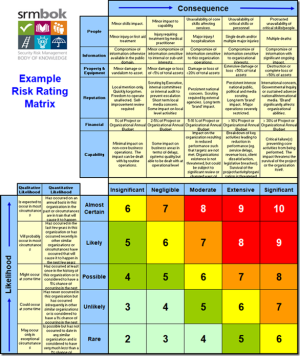Originally posted on September 11, 2021 @ 7:00 PM
What is Critical Thinking in Safety?
Everyone thinks but not all think critically….
 There are countless books out there on supposed ‘critical thinking skills’ but many are not about critical thinking. Many of these books don’t even define critical thinking well. Let’s take for example Cottrell, S., (2005) Critical Thinking Skills, Developing Effective Analysis and Argument . Cottrell sets out her definition of critical thinking as a cognitive activity. Already we see her bias towards brain-centric thinking. Thinking doesn’t exist in a vacuum. Humans are embodied social beings with an unconscious who exist in a social world/culture.
There are countless books out there on supposed ‘critical thinking skills’ but many are not about critical thinking. Many of these books don’t even define critical thinking well. Let’s take for example Cottrell, S., (2005) Critical Thinking Skills, Developing Effective Analysis and Argument . Cottrell sets out her definition of critical thinking as a cognitive activity. Already we see her bias towards brain-centric thinking. Thinking doesn’t exist in a vacuum. Humans are embodied social beings with an unconscious who exist in a social world/culture.
When we frame critical thinking as just a cognitive activity we close out many other Transdisciplinary options essential to critical thinking. Humans think with many more faculties than just the brain. Interestingly, nothing in Cottrell’s book tackles the really difficult issues of power, politics, ethics, the unconscious or a host of social psychological factors that frame embodied reality.
So, Cottrell’s focus simply works on deconstructing text and rationalist thinking about argument. The book discusses observation as some kind of objective activity but never discusses what to look for, how to discern or an ethic of critique, these require an ethical framework. The book discusses self-awareness without mentioning the psychology of personhood and without tackling the challenges of subjectivity or ontological aspects of social presence. You can progress through this 250 page workbook and come out at the other end without thinking critically but convinced you can. There is much more to critical thinking than looking for logical consistency and simplistic notions of evidence.
One can easily construct a supposed logical system based on undisclosed assumptions and build a rational religious argument. This is what zero does.
No one in the zero world thinks that zero doesn’t make sense and so end up in a religious position that thinks zero is rational (https://safetyrisk.net/the-spirit-of-zero/ ). Just listen to all the videos of people in global safety extol the virtues of zero (https://visionzero.global/videos ) when they don’t even know what a virtue is? Nor what it means to be virtuous? If your best approach to ethics is the AIHS BoK (that has no discussion of virtue, power, politics or personhood) you demonstrate clearly that you can’t think critically. Indeed, critical thinking is demonised by Safety that considers philosophy (https://novellus.solutions/podcast/philosophizing-safety/ ) not just irrelevant but anathema to compliance. Anything that deconstructs the sacred cows of safety such as matrix myths, curves, bow-ties, swiss cheese, safety lords and gurus, positivism, behaviourism, pyramids, eugenics, silly slogans, meerkats, Mums for Safety, heroes and dumb ways to die, are considered anti-safety. Rather than tackle the issues I raise, most of the time I simply get name calling, questioning my background, motives or qualifications. The worst thing about Safety is that it has built a fortress for itself based on safety mythology that must not be questioned.
The beginning of critical thinking is looking at life through the lens of power, politics and personhood.
Wherever Safety invokes its political power to dehumanize persons we have an opportunity for critical thinking.
If you didn’t start your journey in safety by tackling the ethics of risk in critical/cultural theory, you’re probably not thinking critically (https://safetyrisk.net/critical-theory-critical-thinking-and-safety/ ). When the best you can do in ethics is ‘check your gut’, ‘common sense’, ‘do the right thing’, ‘safety is a choice your make’ and ‘all accidents are preventable’, you are not thinking critically. When safety is defined by template downloads, checklisting and repeating safety myths, you are not thinking critically.
This is the stuff Safety throws at people, that quickly gets normalized and constructed as orthodox but contributes nothing to safety. Indeed, lots of what Safety does makes workplaces less safe (https://novellus.solutions/podcast/the-dangers-of-safety-bureaucracy/ ).
Just ask yourself a few simple questions: how is it that all these things like: silly pyramids, curves, triangles, iCam, bow-tie, swiss cheese and matrix etc. get normalized? What is the political mechanism that normalizes? Do any of these things actually help people tackle risk? Are any of these things legally defensible? Of course not, yet here they are deemed orthodox by an industry that doesn’t want to think critically. More so, there is no safety curriculum that fosters critical thinking. What’s even more dangerous is when the AIHS BoK on Ethics tells you that Safety is objective, why would you need critical thinking?
BTW, there is nothing in the AIHS BoK or WHS curriculum on critical thinking. If there was, you would have to throw out quite a number of chapters that have been deemed orthodox that are not, starting with the nonsense chapter on ethics.
If you want to learn how to think critically then the starting place is outside the safety industry, outside the confines of safety mythology.
One of the first books I read was Pedagogy of the Oppressed by Paulo Freire (1972), a book that rips to shreds the nonsense notion that schooling is education. At the same time I read Ivan Illich (1971) Deschooling Society, Evert Reimer (1971) School is Dead and, Postman and Weingartner (1969) Teaching as a Subversive Activity. In the Education, Learning and Teaching profession there is no fear of dissent like there is in safety. Indeed, dissent and critical thinking is encouraged by the profession. One of my first lecturers in Education was gaoled for his opposition to the Vietnam war. My first tutorial with acclaimed academic Dean Ashendon in Education in 1971 was on freedom, determinism, subjectivity, power, subjectivity and an ethic of education. My first lecturer in English was Mem Fox who tore apart the masculinist literacies that dominated the time and introduced me to semiotics and linguistics. My art lecturer was Tom Gleghorn who deconstructed the mythologies of art and introduced me to methods of deconstruction. I was so lucky to be introduced to critical thinking in 1971. We cut our teeth in critical thinking against the oppression of the Vietnam War and the dominant discourse of American Imperialism. IF thinking doesn’t involve a ethical consideration of political power, it’s not critical thinking.
If you want to learn how to think critically it has to be modelled and developed and is much more than some cognitive activity. Critical thinking is a political, ethical and embodied activity. Take this view to what you see in safety and you would quickly dispense of so many of the models, tools and mythologies that simply reinforce the power of orthodoxy in order to dehumanize the vulnerable.



Do you have any thoughts? Please share them below